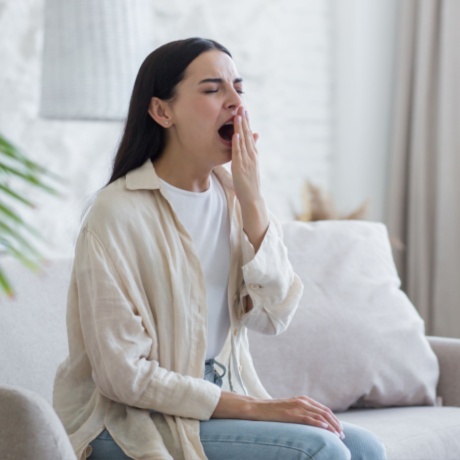Login to your account
- Prescription included
- Genuine medication
- All-inclusive service - No hidden fees
- Free next-day delivery
What are the most effective and simple ways to lose belly fat...
… and improve your overall health and wellbeing?
Let’s start by dispelling a common myth - targeted fat loss (spot reduction) is not a thing. You can’t pick a body part… your belly, your butt, your calves… and choose to lose weight there and only there. Your body stores fat across your body and burns this fat evenly when you use more calories than you consume - whether that is the result of more exercise, a restricted diet or both.
Now for the good news - though weight loss can be a real challenge, incremental changes to your lifestyle can show results all across your body, from your buttocks to your belly. It might take a little time, but to get that toned stomach, all you have to do is stick (consistently) to a few simple rules.
What causes belly fat?
All forms of weight gain are the result of consuming more food and (sugary/alcoholic*) drinks than you need to function. When your body digests a large volume of calories (energy), it stores any excess in special cells called adipocytes (or adipose cells). These will either grow in size or multiple as your caloric intake increases and you put on weight.
As you get older, often your activity levels begin to decline. If your diet stays the same, or if you pay less attention to the foods you’re eating, you may start to notice more fat in areas like the belly. Postmenopausal women especially may notice an increase in fat in this area - this is due to lower oestrogen levels affecting fat distribution Trusted source National Center for Biotechnology Information (NCBI) Government Source Biomedical Research and Literature Go to source .
However, research shows Trusted source PubMed Government Source Database of Biomedical Research Go to source that genetics is by far the largest contributor to why you store fat around your midsection. If you have more fat on your belly than other areas of your body, this just means your body is preprogrammed to allocate fat to this area, it doesn’t mean you’re eating “belly fat” foods.
*A “beer belly” is not the result of too much alcohol - simply, too many calories in general.
How much belly fat is too much?
You should always consult with a doctor or healthcare professional for a definitive result when taking health measurements.
The best way to measure abdominal fat is to place a tape measure around the widest part of your stomach (waistline). You should stand in a relaxed position and exhale, but do not push out your stomach forcefully. A measurement of more than 25 inches (89 centimetres) for women, and 40 inches (102 centimeters) for men, indicates abdominal obesity.*
Abdominal obesity is a contributing factor in a vast number of health concerns and may exacerbate existing conditions.
*It is important to understand that this is an average. Different builds and sizes of people will have different definitions of abdominal obesity.
What health problems are caused by being overweight or obese?
You might be wondering why you should have to lose weight if you’re happy with your appearance and your weight has no obvious bearing on daily life. However, there are deeper (often invisible) health concerns directly linked to obesity.
Abdomen fat is not limited to the layer that sits beneath the skin - subcutaneous fat. Your organs are also naturally insulated by a layer of visceral fat. This is far more dangerous and is linked to serious secondary health conditions. Even if you are a healthy weight, too much visceral fat can cause the following conditions:
- type-2 diabetes
- high blood pressure
- heart disease
- cholesterol problems
On top of this, if you’re overweight or obese, it is recommended to find ways to lose weight to reduce the chance of experiencing the following:
- stroke
- osteoarthritis
- cancers
- mental health concerns
If you have any of the above conditions and are overweight or obese, your weight isn’t necessarily the cause, but it is strongly advised that you do aim for a healthy body mass index (BMI)*. You should speak to a doctor for more information.
*Again, this does not apply to all individuals. Always consult a medical professional.

How can you safely reduce belly fat?
Diet
By far, the best way to improve your diet is not to focus on “bad foods”*, like sugary beverages and fatty takeaways, but rather to incorporate more “good foods” into your meals. Include more vegetables and fruits; opt for water and black coffees and teas; and experiment with wholemeal pasta, rice and bread.
You should also reduce portion size. Even if you have the best diet in the world, too much food will cause you to gain weight. It is generally accepted that the average man should consume around 2,500 calories a day, whereas the average woman should consume 2,000. Of course, as with all averages, you may fall outside this number. The best way to determine your basal metabolic rate (BMR) - which is the measurement of how many calories you need daily - is to speak with your GP or a dietitian. You can also use this NHS BMI calculator Trusted source NHS Government Source Go to source as a guide to better understand your food intake.
*Carbs are not bad.

Exercise
Everyone, regardless of whether they’re overweight or not, can benefit from some form of exercise. Your health, along with your fitness level, will determine how intense workout sessions should be - it may be that you are better suited to a brisk walk than a 20-mile hike. You should consult with your doctor before beginning any new exercise regime.
For those aged 19-64, the NHS recommends Trusted source NHS Government Source Go to source daily exercise, with a minimum of 150 minutes of moderate exercise or 75 minutes of vigorous exercise weekly. It is also beneficial to combine forms of activity - both anaerobic and aerobic exercises (e.g. strength training and running ) - so that you are working your muscles, connective tissues and cardiovascular system.
Doing exercises that focus on your abdominal muscles, like crunches or sit-ups, will not accelerate belly fat loss more than other movements. Your muscle mass may increase in this area, but stomach fat is not targeted.
Other than physical improvements, you will find regular exercise improves your mental wellbeing. A good workout leads to a production of endorphins - pain-relieving chemicals that alleviate stress. Higher heart rates also cause your nerve cells to release neurohormones like dopamine, serotonin and norepinephrine. These improve mood and concentration, helping you overcome damaging thought patterns. Other than this, exercise is just a great distraction, an especially useful tool if you are dieting concurrently.

What are some last resorts?
You should only consider the following treatment plans if diet and exercise alone are not effective enough for you. There are many misconceptions surrounding what constitutes a healthy diet and reasonable exercise - you should first consult with a doctor to make sure you are taking the right steps.
Prescription medication
- Saxenda - administered as an injection, Saxenda contains the active ingredient liraglutide, which works to suppress appetite and hunger pains, so that you eat less
- Xenical - contains the active ingredient orlistat and prevents approximately ⅓ of dietary fat from being stored by the body
Both of these treatments should only be used with the permission of your doctor and in conjunction with a reduced-calorie diet and exercise regime.
Surgery
All surgery, regardless of how invasive, poses risks. It involves exposing you to surgical complications. You should only consider it with the advice of your doctor. Most likely, they will first suggest you lose some weight through diet and exercise. If you do not make diet and lifestyle changes post-surgery, you will only put the weight back on.
Popular cosmetic surgeries for belly fat include:
- tummy tuck (abdominoplasty) - in this operation, excess skin and fat are removed to create a more toned look
- liposuction - the surgeon will use a machine to suck out fat deposits from your abdomen
More invasive surgeries, designed for treating obesity include:
- gastric band - this surgery involves placing a band around the top portion of the stomach. It takes less food to fill this section up, reducing your appetite
- gastric bypass - a surgeon will staple a pouch at the top of your stomach and then connect your lower intestine to it, essentially creating a smaller stomach
- sleeve gastrectomy - if you have this surgery, a large section of your stomach will be removed, considerably reducing your appetite
These are not all the weight loss surgeries available, though they are the most popular.

If you think you might have too much belly fat, you should check your weight, BMI and overall health with a doctor. It is important to remember: not all weight gain is bad and may be influenced by myriad factors such as age, genetics and lifestyle. However, if your weight is impacting your health, achieving a healthy weight can be one of the best means of treating and preventing debilitating health concerns now and later in life.
Further reading

Saxenda results: expectations vs. reality
Reviewed by Dr. Caroline Fontana
Understanding Saxenda Side Effects
Reviewed by Dr. Caroline Fontana
Mysimba’s side effects and management
Reviewed by Dr. Caroline Fontana
Wegovy: How well does it work and how quickly?
Reviewed by Dr. Caroline Fontana
Understanding Wegovy side effects
Reviewed by Dr. Caroline Fontana
How does insulin affect your weight?
Reviewed by Dr. Caroline Fontana

5 tips for losing menopause weight
Reviewed by Dr. Caroline Fontana
Select
medicationFill out a short
medical formDoctor issues
prescriptionMedication sent
from pharmacy




